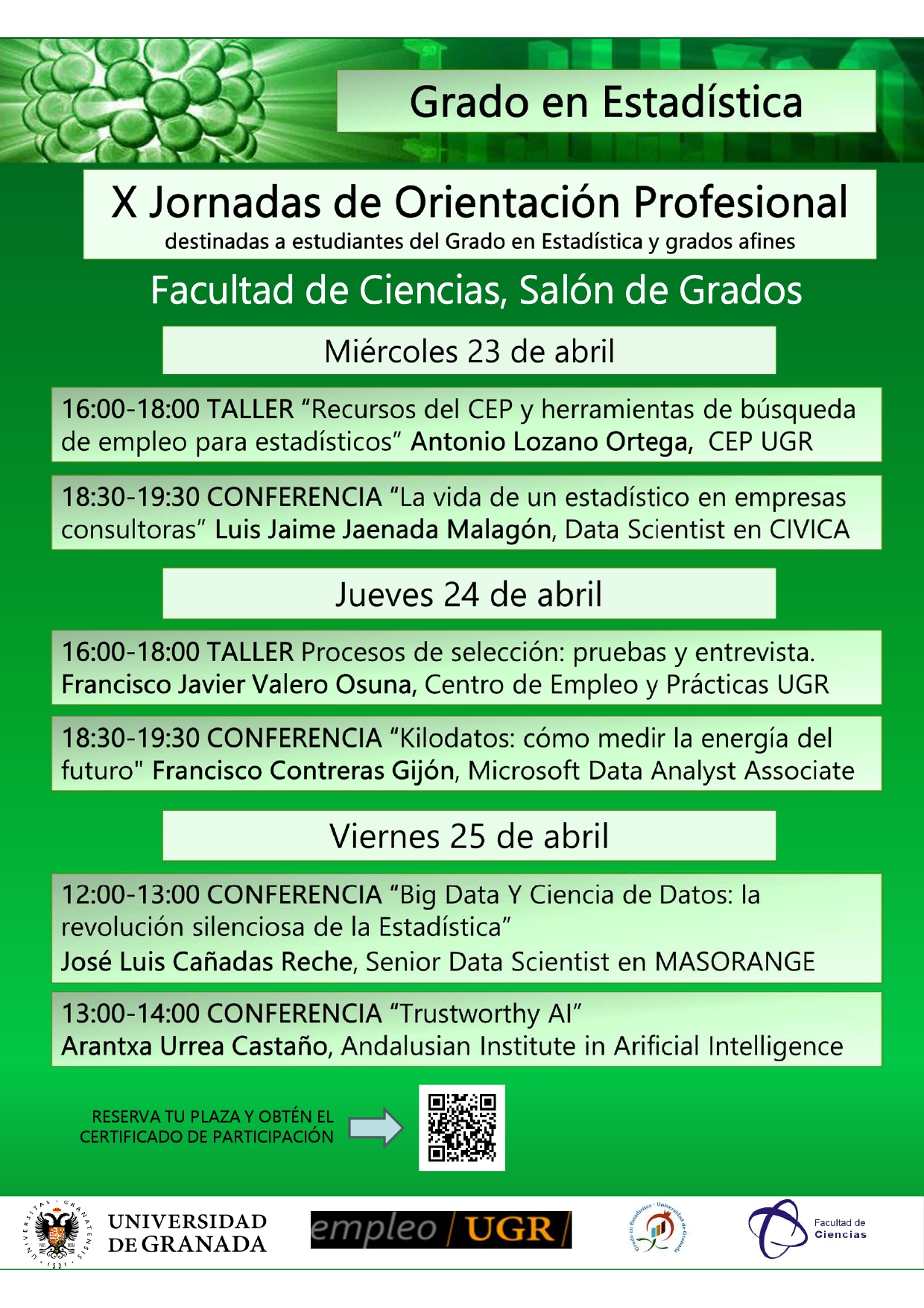Dom, 02/03/2025 - 11:15
El prof. Jorge Mateu, Departamento de Matemáticas, Universitat Jaume I, Castellón (mateu@uji.es, https://www3.uji.es/~mateu ) impartirá el miércoles 5 de marzo de 2025, a las 12:00 en el Salón de Grados, Facultad de Ciencias la conferencia "Statistical learning for spatio-temporal point processes".
Resumen:
This seminar is focussed on using neural network strategies when dealing with spatio-temporal point processes.
First problem. Given two spatial point patterns, random similarities or differences between them provide no information about the underlying differences between their corresponding generative point processes, and only structural similarities or differences are of interest. To this end, major determinants of given point patterns that include the most relevant information about the underlying point processes that have generated the observed point patterns must be extracted by a suitable transformation. Such transformation is called feature extraction in machine learning and pattern recognition literature. Here we use neural network methods to distinguish between generative processes and provide a classification method for new arrivals.
Second problem. We propose a framework of spatio-temporal-network point processes for modeling crime events observed within street networks in urban areas. The framework incorporates the city street network structure as the underlying space of the crime events' occurrences, and uses a street network-based distance to measure the distance between events living in the continuous geographic space. We extend the definition of the event mark by concatenating the crime category of the event and the type of its nearby city landmark. Temporal and street distance-based spatial kernel functions are adopted to characterize the event dependencies over time and the geographic space, and the interactions between crime events with different marks are modeled through a mark interaction network. The learning of the mark interaction network is achieved by incorporating graph neural networks (GNNs) in our influence kernel.
Third problem. While random permutations of point processes are useful for generating counterfactuals in bivariate interaction tests, such permutations require that the underlying intensity be separable. In many real-world datasets where clustering or inhibition is present, such an assumption does not hold. Here, we introduce a simple combinatorial optimization algorithm that generates second-order preserving (SOP) point process permutations, for example, permutations of the times of events such that the L-function of the permuted process matches the L-function of the data. We apply the algorithm to synthetic data generated by a self-exciting Hawkes process and a self-avoiding point process, along with data from Los Angeles on earthquakes and arsons and data from Indianapolis on law enforcement drug seizures and overdoses. In all cases, we are able to generate a diverse sample of permuted point processes where the distribution of the L-functions closely matches that of the data.
Fourth problem. Previous research demonstrated that second order statistics such as the K-function could not reliably be used to distinguish between log Gaussian Cox (LGCP) and Hawkes processes. However, recent work suggests that machine learning algorithms such as convolutional neural networks (CNN) may be able to differentiate spatial point patterns. The use of a CNN allows for higher level features to be used to distinguish between point patterns that perhaps are indistinguishable by the human eye or through conventional statistics, especially first or second order statistics. Here, we analyze whether convolutional neural networks can aid in distinguishing Hawkes processes from LGCPs and offer recommendations for model selection between these two types of spatio-temporal clustering processes.
Organiza: Academia de Ciencias Matemáticas, Físico-Químicas y Naturales de Granada, con la colaboración del Máster Universitario en Estadística Aplicada (UGR)


